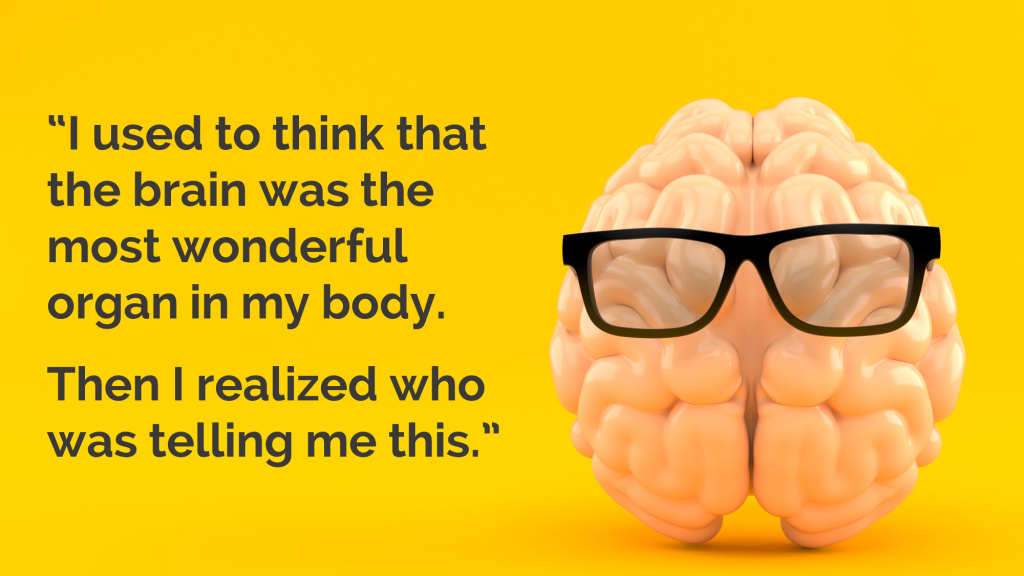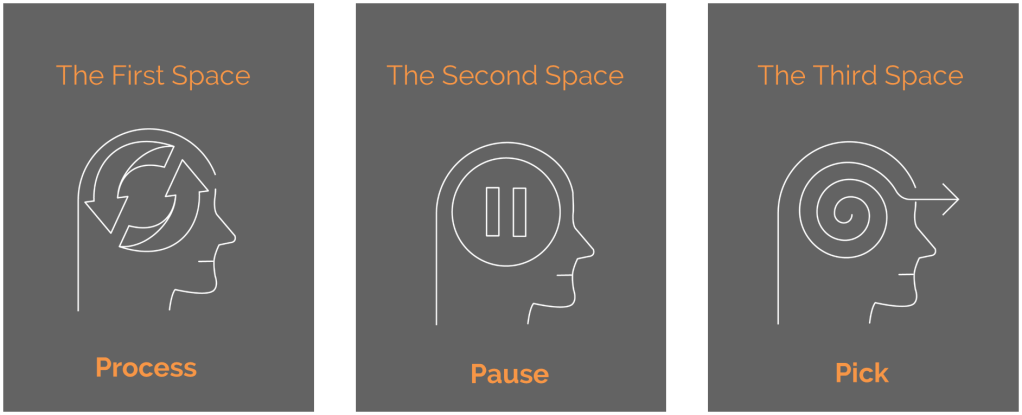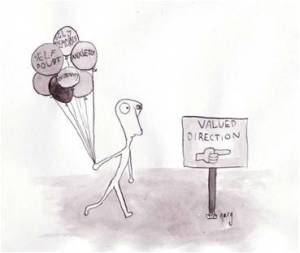By Aprilia West, PsyD, MT, PCC
Emotion efficacy refers to your capacity to effectively navigate emotional experience while responding in context-sensitive, values-based ways[1]. While many people still think of emotions as a topic for distressed clients in a therapeutic setting, the reality is you are always processing emotion on some level. And how well you harness your emotions shapes the choices you make. This makes the topic of emotional efficacy important not only for therapists but for coaches and any providers who are working with people around wellbeing and performance.[2]
Here’s why people need help increasing their emotion efficacy: emotions are your primary motivational system, they inform the estimated 35,000 choices you make everyda – for better and for worse. This happens because emotions are always sending you messages to motivate you to act in a certain way. However, while some messages tell what you actually care about – your values, others might simply arise from automatic default reactions, giving you “fake news” about what matters in a given moment.[3]
In other words, emotions don’t always read the room, e.g., after a long day you choose to Netflix-binge when going to the gym is actually more important to you. Or, you avoid doing something (advocating for work-life boundaries) that you know is key to enhancing your quality of life. Why? Because your emotions urge you towards comfort, certainty, coherence and pleasure. This is why anyone with low emotion efficacy can easily end up moving away from what they care about and how they want to show up, personally and professionally.
In contrast, when you have high emotional efficacy you can decode emotional messages and override default emotional reactions. This leads to more effective choices and meaningful moves. Increasing your emotional efficacy naturally breaks the trance of default emotional reactivity, and can improve your resilience, psychological flexibility, and emotion intelligence.[4][5][6] This skills upgrade will help you harness your emotions and better tolerate stress and distress, overcome challenges, and attain higher performance levels.
WHEN YOU HAVE HIGH EMOTIONAL EFFICACY YOU CAN DECODE EMOTION MESSAGES AND OVERRIDE DEFAULT EMOTIONAL REACTIONS, THIS LEADS TO MAKE MORE EFFECTIVE CHOICES AND MEANINGFUL MOVES.
While most therapists tend to have some training around working with emotion, coaches are often less skilled and less comfortable addressing low emotional efficacy. In fact, some research suggests that coaches often see emotions as conflicting with rationality, needing to be contained, and/or managed only in therapy.[7][8] This is a slow-dying, outdated understanding of the role of emotion in learning, change, human motivation and behavior.[9]
Consider a few non-clinical examples where coaching for emotional efficacy led to less reactive and more contextually adaptive choices:
- A CEO in leadership coaching was seeking funding and while presenting his plan to investors when he gets offended by some of the questions asked. He interprets the queries as infantilizing, challenging of his expertise and showing ignorance of his industry. Instead of acting on the urge to shut down or get snarky, the CEO pauses, notices how the emotion trigger is showing up in his body and refocuses on what matters most to him: providing the information the investor needs to see why the company is a good fit for their portfolio.
- A project manager in her mid-30’s in executive coaching is struggling with chronic burnout needs to talk to her boss about establishing more clear work/life boundaries to resource herself. Instead of acting on the urge to avoid the conversation she is able to tolerate her feeling of dread, thoughts about disappointing her boss, tension in her chest and throat and express her need to “clock out” after 6 pm and be unavailable until the next morning at 9 am.
- An HR professional in executive coaching with performance anxiety is asked to give the annual talk at the company retreat. She has practiced and knows what she wants to say, but an hour before she begins to notice her heartrate speed up and she starts sweating profusely. Instead of acting on the urge to bow out or go home “sick,” she uses diaphragmatic breathing and the coping thought “this is scary, but not actually as dangerous as it feels” to calm herself down and is able to deliver an inspiring speech to the company.
Emotional efficacy skills have been shown to promote a more powerful and adaptive relationship with emotions and can lead to increases in wellbeing and performance[10]. Emotion efficacy training can be administered using a brief structured protocol or in a more flexible, functional way. Emotional efficacy training doesn’t just rely on insight; the learning is experiential. Clients practice in an activated state to simulate using the skills in real life scenarios to improve the client’s learning, retention and recall[11].
The 4 core emotional efficacy skills are rooted in evidence-based psychological processes:
- Emotion Awareness: noticing and labeling emotional STUF: sensations, thoughts, urges and feelings.
A lot of clients either aren’t aware of their emotional experience, or they think of emotions simply as feelings, and don’t realize the interplay between their sensations, thoughts and urges as well. Encouraging clients to practice mindfulness of all parts of their emotional experience can help them become more aware of their needs, interests, desires and yearnings and less vulnerable less helpful automatic reactions. Learning how to notice and breakdown the essential elements of their experience is the first step to becoming more intentional with their choices.
- Emotion Surfing: leaning into unwanted or distressing emotions without reacting
Because humans are wired to avoid discomfort, distress, challenge, it’s a whole new level to tolerate distress instead of acting on the urge to move away from it. It’s often a new and even weird idea not to act on intense emotions but to instead get curious about them. Encouraging clients to recognize and be intentional in moments of choice will help them connect the impact of their emotions on their decisions and behaviors. They can learn to harness their emotions to override automatic reactions and more effectively face challenge, stress and pain.
- Values-Based Action: understanding and aligning behavior with what matters most
Engaging meaningfully—especially when clients get triggered—takes knowing what matters most and being able to imagine how to align your behavior with it. This often means becoming more skillful interpreting emotion signals and being agile, intentional and creative enough to act on what matters most. Knowing how to pivot to values-based moves opens up a whole new world of possibilities for clients, personally and professionally.
- Mindful Coping: regulating emotions to take values-based action
Knowing how to dial down emotional intensity can not only give clients the ability to refrain from escalating difficult situations, but also give them recovery time to focus on what matters and how they want to show up. Clients can benefit from coping strategies that disrupt emotional activation on a somatic, cognitive and affective level and find their way back to values-based action.
Dr. Aprilia West is a psychologist, coach, trainer and author of What You Feel Is Not All There Is, ACT For Your Best Life and coauthor of the clinician’s guide to Emotion Efficacy Therapy (EET) and Acceptance and Commitment Coaching in the Workplace.
For more information on emotional efficacy go to: www.emotionefficacy.com.
For information on trainings in using emotional efficacy with clients go to: www.drapriliawest.com/training.
[1] West, 2021. What You Feel Is Not All There Is. En Masse Media, Los Angeles.
[2] Gross, J. J., & Thompson, R. A. (2007). Emotion Regulation: Conceptual Foundations. In J. J. Gross (Ed.), Handbook of emotion regulation (pp. 3–24). The Guilford Press.
[3] Greenberg, L.S.. (2004). Emotion–focused therapy. Clinical Psychology & Psychotherapy. 11. 3 – 16. 10.1002/cpp.388.
[4] Tugade, M. M., & Fredrickson, B. L. (2007). Regulation of positive emotions: Emotion regulation strategies that promote resilience. Journal of Happiness Studies: An Interdisciplinary Forum on Subjective Well-Being, 8(3), 311–333. https://doi.org/10.1007/s10902-006-9015-4
[5] Gross, J. J., Richards, J. M., & John, O. P. (2006). Emotion Regulation in Everyday Life. In D. K. Snyder, J. Simpson, & J. N. Hughes (Eds.), Emotion regulation in couples and families: Pathways to dysfunction and health (pp. 13–35). American Psychological Association. https://doi.org/10.1037/11468-001
[6] Kashdan, T. B., Disabato, D. J., Goodman, F. R., Doorley, J. D., & McKnight, P. E. (2020). Understanding psychological flexibility: A multimethod exploration of pursuing valued goals despite the presence of distress. Psychological Assessment, 32(9), 829–850. https://doi.org/10.1037/pas0000834
[7] Fineman, S. (2010). Emotion in Organizations — A Critical Turn. In: Sieben, B., Wettergren, Å. (eds) Emotionalizing Organizations and Organizing Emotions. Palgrave Macmillan, London. https://doi.org/10.1057/9780230289895_2
[8] Pizarro, D. (2000). Nothing more than feelings? The role of emotions in moral judgment. Journal for the Theory of Social Behaviour, 30(4), 355–375. https://doi.org/10.1111/1468-5914.00135
[9] Cox, E., & Patrick, C. (2012). Managing emotions at work: How coaching affects retail support workers’ performance and motivation. International Journal of Evidence Based Coaching and Mentoring, 10(2), 34–51.
[10] http://www.emotionefficacytherapy.com/what-people-are-saying
[11] McKay & West (2016). Emotion Efficacy Therapy (EET). Context Press, Oakland, CA.





















